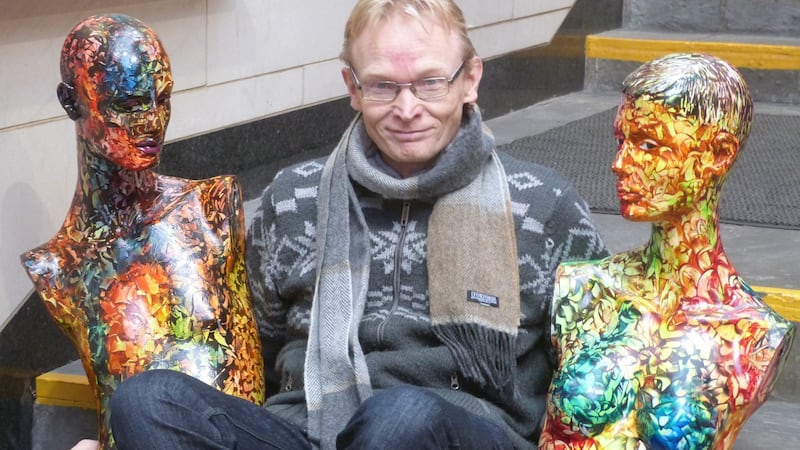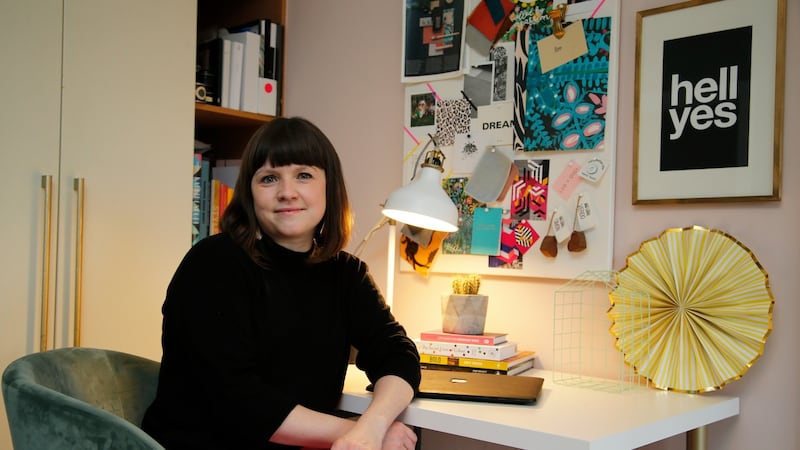Still believe in things like a job or career for life? You’re only showing your age if so. The days of walking into a workplace as an eager greenhorn and back out 50 years later with a golden carriage clock are long gone.
Recent statistics hint that “encore careers” are becoming less the exception and more the rule, with many experts estimating that that we’ll enjoy an average of 3.2 careers.
Job satisfaction is one thing, but it can often look like a long way down from a middle, or even top, point on the career ladder. Besides, it’ not easy to turn one’s back on years of accrued experience and success, or the lifestyle that a comfortable career can afford, for that matter.
We asked a number of people who left comfortable, well-paid jobs for the great unknown why they did it, how they managed it and why others should at least consider it.
I still have 20 years of work still left in me. There are other currencies in life other than money
Nicholas McClune (47), from Collins Avenue in Dublin, left a 20-year career in insurance to retrain as a pilot.
“I really just fell into insurance, yet after 20 years I’d held some very senior positions as an underwriter. I was initially attracted to the idea of a well-paid job and there were plenty of perks – a lot of entertaining and socialising, like going to Mondello or rugby matches for VIP days out.
"Post-financial crash, I was really forced to think, 'do I want to do this for 25 years?' My first attempt at a career change was to try being a chef. I appeared on Masterchef Ireland and on the back of that I worked in a few restaurants. Being in my 40s it was hard work – I soon got it out of my system.
“My wife Sorcha bought me a flying lesson for Christmas 2015 and I figured it was something I’d really enjoy doing. Sorcha and I sat down and discussed the financial implications of leaving a fairly senior role and soon it was time to start my flight training. I did my private pilot exams before moving into commercial exams. I worked at the same time so I’d study for four days at a time, then it was back to shift work. Soon, I will qualify fully and it’s off to the airlines for me for my dream job.
“Switching lanes in your 40s is difficult, especially when you have mortgages and loans. You’ll likely be taking orders from people younger than you, or being asked why you want a certain job when you have all this experience. And you have to steel yourself for that. Yet the way I see it, I still have 20 years of work still left in me. There are other currencies in life other than money.”
Lisa Wilkinson (52), based in Wicklow, had been working as director of marketing strategy for a San Francisco tech company when she decided to "run away" from her life and retrain as a yoga instructor. She runs The elbowroom, a wellbeing hub in Stoneybatter (the-elbowroom.com).
"I was working in San Francisco for a company called Oracle and in the late '90s was headhunted back to Ireland through a new tech startup. There was a bit of bullying going on there, meaning that my stress levels went through the roof. Around that time someone else gave me the Dummies' Guide To Stress, and sure enough, Point 23 was to run away, which I did. I packed in my job and my boyfriend and ran to the Bahamas. Every time I went to yoga practice there I went from chronically stressed to blissfully happy. And I thought, 'if I can do it to myself, when I was in a really bad way, I can do with other people'.
“I went back to Dublin, did a bit of software consulting for money – I had a ridiculous day rate of €1,000 – and opened up the Elbow Room in Stoneybatter. I had a nest egg before I took the leap. In the beginning, it was very much ‘needs must’. I was teaching 20 classes a week on my own and was . . . coming away with a low salary. I started to grab every opportunity and throw different ideas about, trying to maximise all the space in the studio. It’s how my entrepreneurial side kicked in. It’s exhausting and has never stopped – it keeps you awake. I didn’t know if I could make payroll for months on end and it’s so isolating in that spot. By 2016, I realised I’d been able to pay myself for a full 12 months.
“My advice is to tell people to go for it. But go to a really good accountant with your business idea and crunch the numbers to see if you can make money and how much it will cost you to make money. If you’re passionate about it, you’ll always be the best sales person for your product.”
I've realised I'm not a nine-to-five person and probably never have been
Aidan Weldon (48) from Trim left a career as an engineer to follow his dream of becoming a photographer (aidanoliver.com).
“When I was an engineer I knew that all the while the career ladder moved upwards and there were always opportunities, but I wasn’t feeling it. I remember sitting in traffic one evening realising that it took me two hours to get home from work in Leixlip to Stoneybatter. I couldn’t do it anymore.
“I started studying to get a City & Guilds certificate in photography. So I’d come home from work at 8pm, spend two hours studying and then start all over again. It was fairly arduous.
“I was earning a good wage, so the transition from one career to the other and seeing that steady wage disappear was hard. You start to second-guess yourself and there were times I was ready to give up, but you start to realise that on the other side the capacity to earn as much as you want will eventually be there. Eating beans on toast is not a big thing to take on board, knowing the satisfaction of creating work and meeting people on your own terms.
“These days, I am happier. I love the variety of my work. I can drop down and play with my son (Adam, aged one), and having that year to bond with him was worth more than money can ever give. I’ve realised I’m not a nine-to-five person and probably never have been.”
Frank O'Dea (52) from Dublin was a bank official in AIB before starting his own art gallery, Balla Ban Art (ballaban.net).

“I think I was influenced by the fact my father worked in the bank and I liked the idea of following his career. It was also considered a permanent pensionable job and would have seen that as an attraction too in the days of uncertainty.
“As I moved into support roles within the organisation I rally loved it and saw more opportunities in this area. Yet transferring from various head office support roles into branch banking was like putting a square peg into a round hole for me. I was cooked up in what I would call a ‘tiny prison cell’ in a branch with no window, counting money all day.
“I supposed I was always hoping I could set up my own business and I’ve a huge passion for art. I found a tiny unit up for rent in the Westbury Mall and I fell in love with it. After a nine-month sabbatical I returned to the bank and employed someone to run it during the week, then I would go in on Saturdays.
“It was actually an easy transition going from the full-time job in the bank into my own business because I already had nine months behind me with setting up the gallery before returning to work. The business continued to grow while I was still employed in the bank. However, it took close to five years before it started to become a viable business.
“I’ve met many people over the years who have been much higher positions in the bank than me and I still have to meet one person who regretted taking early retirement or a severance package. With the support and encouragement from my wife and friends and a lot of hard work and effort it has paid off. There is a very thin line between work and pleasure for me.”
Elaine Verdon (37) from Baldoyle left her job as Thinkhouse's youth communications director last year to open Leo + Cici, an interiors company.

“Working in Thinkhouse, a youth communications agency, was like a lifestyle. I had an amazing ten years there, with plenty of parties and press trips. Yet it got to the point where there wasn’t another role to ‘graduate’ to after mine.
“Two years ago, I realised I didn’t have any ‘extracurricular’ activities outside work and play and I always had had a passion for interior design. I’d enjoyed doing my own house, so I signed up to a course at the Dublin Institute of Design. I realised it was my calling and I started doing small interiors projects on the weekends. I had a healthy chunk in the credit union and began saving like mad. Soon, I started getting clients.
I did get the fear, panicking that I couldn’t walk away from the day job. I cried handing in my notice but my boss said, ‘this is what you’re meant to do’. For years I was ‘Elaine from Thinkhouse’ and it’s been very hard to disentangle myself from that. The week I handed in my notice I got pregnant. I had my son Arthur in April last year and had to pick up projects very soon after his birth, about eight to nine weeks after. It really helped that I wasn’t doing a 40-hour workweek.
“To anyone in a similar position think about what the worst is that could happen – I guarantee you that it won’t. I’ll have days where I go, ‘what was I thinking?’, but most of the time I know 100 per cent it was the right decision. I wish I’d done it years ago, in fact.”








